If you’re a rabbit lover, you know how important it is to provide your furry friends with a cozy and safe place to call home. Buying a rabbit hutch from a store is an option, but wouldn’t it be even better to make one yourself? Not only will you save money, but you can also customize the hutch to suit your rabbit’s needs.
Rabbits are special, unique creatures with specific living space requirements. They love to snuggle up in comfortable and cute shelters, and if you plan on breeding them, you’ll need a bigger hutch sooner than you think.
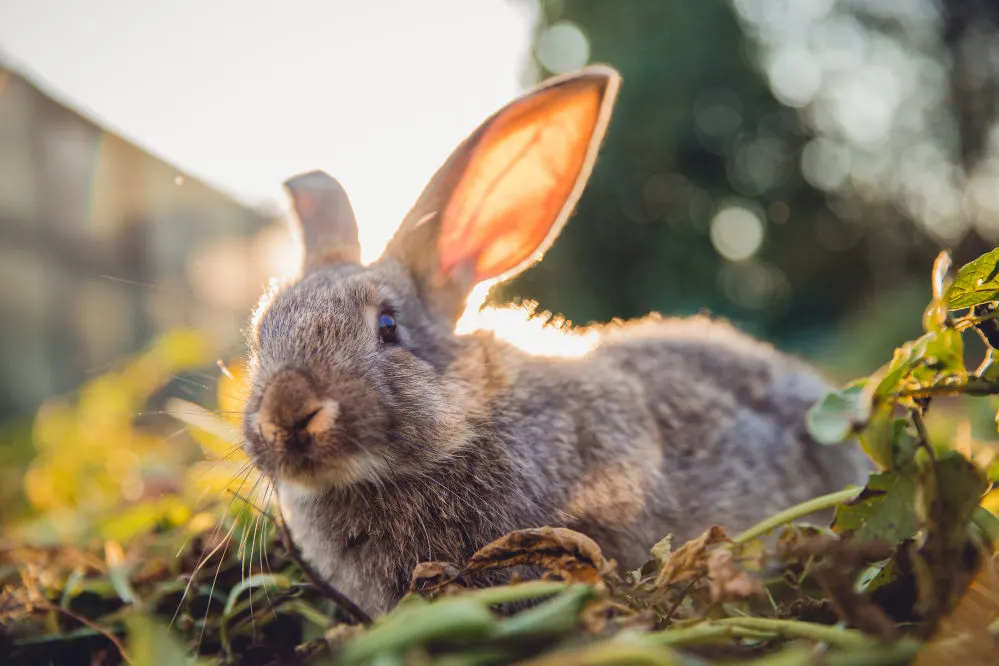
Building a rabbit hutch can be a fun and rewarding DIY project with the right tools and some easy-to-follow plans.
So let’s get started and give your adorable pet rabbits the best home they deserve!
Tip: Read this to learn about the different rabbit breeds out there.
Rabbit house ideas
These rabbit house ideas have been hand-picked from across the internet, ranging from simple and functional to elaborate and detailed.
Whether you’re a seasoned DIY enthusiast or a beginner who wants to buy ready-made, you can have a safe and sturdy rabbit hutch within a weekend.
Indoor rabbit house ideas
From multi-level condos (because why not?) to cozy hideaways, there are plenty of creative ways to make your furry friend feel at home.
Indoor rabbit hutch
An indoor rabbit hutch can be a great way to give your furry friend a comfortable and secure space to call their own. With plenty of room for your bunny to move around and stretch its legs, a well-designed hutch can be a great addition to your home.
Consider adding features like ramps and hideaways to make the space even more spacious, fun and engaging for your pet.
Indoor rabbit cage
If you’re short on space or looking for a more budget-friendly option, an indoor rabbit cage may be the way to go. With a wide range of sizes and styles available, there’s sure to be a cage that will work for your needs.
Look for models with easy-access doors for cleaning and feeding, and consider adding features like a litter box and water bottle to keep your bunny comfortable and happy.
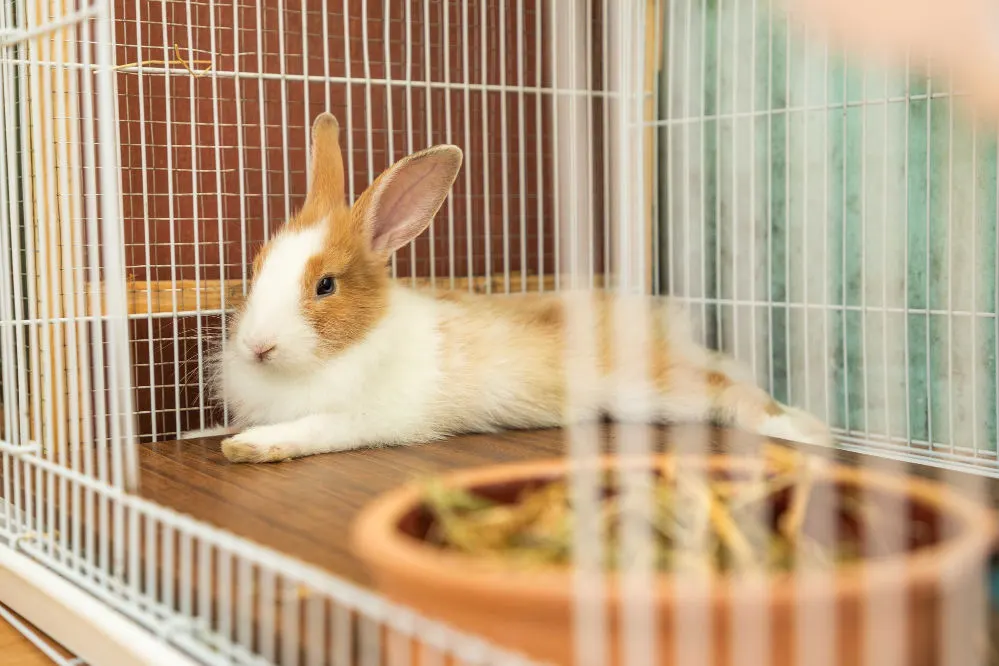
Tip: Got a guinea pig? Consider these top guinea pig cages for your adorable little friend.
Indoor rabbit condo
If you’re looking for a stylish and modern rabbit housing option, an indoor rabbit condo may be just the thing. These multi-level units often feature ramps and hideaways to keep your bunny entertained while providing plenty of space to move around.
Look for models with sturdy construction and easy-to-clean surfaces for the best result for your rabbit’s home.
Indoor upcycled rabbit hutch
For a more eco-friendly and budget-friendly option, consider upcycling old furniture around the house into a rabbit hutch. Whether you’re using an old dresser or bookshelf, this DIY rabbit hutch idea is a fun way to create a unique living space for your bun bun.
A major benefit of upcycled rabbit hutches is that they allow you to customize the space to your bunny’s specific needs. You can add shelves, ramps, and hiding spots for plenty of exercise and stimulation. Plus, you can choose materials that are safe and non-toxic for your bunny.
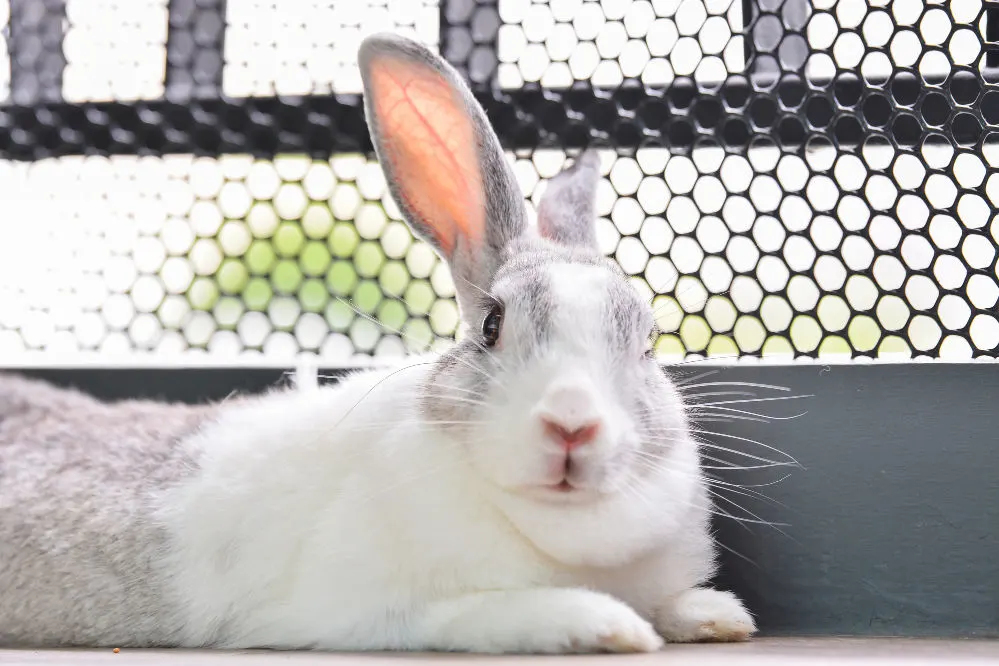
On a budget? Another advantage of an upcycled rabbit house is that it can be cost-effective. You’re also reducing waste and helping the environment by repurposing these items from your home. Just be sure that the design and construction of your upcycled rabbit hutch is safe and without any areas where they could become stuck or injured.
Indoor small space hutch
If you’re short on space, don’t worry — there are still plenty of options for indoor rabbit housing. Look for compact stackable models that easily fit into small apartments or homes and have multiple levels with ramps so your bunny can move around more. You can find models with built-in wheels for easy maneuverability.
Indoor PVC rabbit hutch
PVC pipe can be a great material for building an indoor rabbit hutch. With its lightweight and durable construction, PVC can be shaped and molded into various designs and configurations.
Why not consider adding tunnels and hideaways to make the space more fun and engaging for your bunny?
Indoor DIY gated rabbit cage
If you’re handy with tools and looking for a DIY project, consider building an indoor gated rabbit cage from scratch. You can create a custom cage that perfectly fits your bunny’s needs with some basic materials like wood and wire mesh.
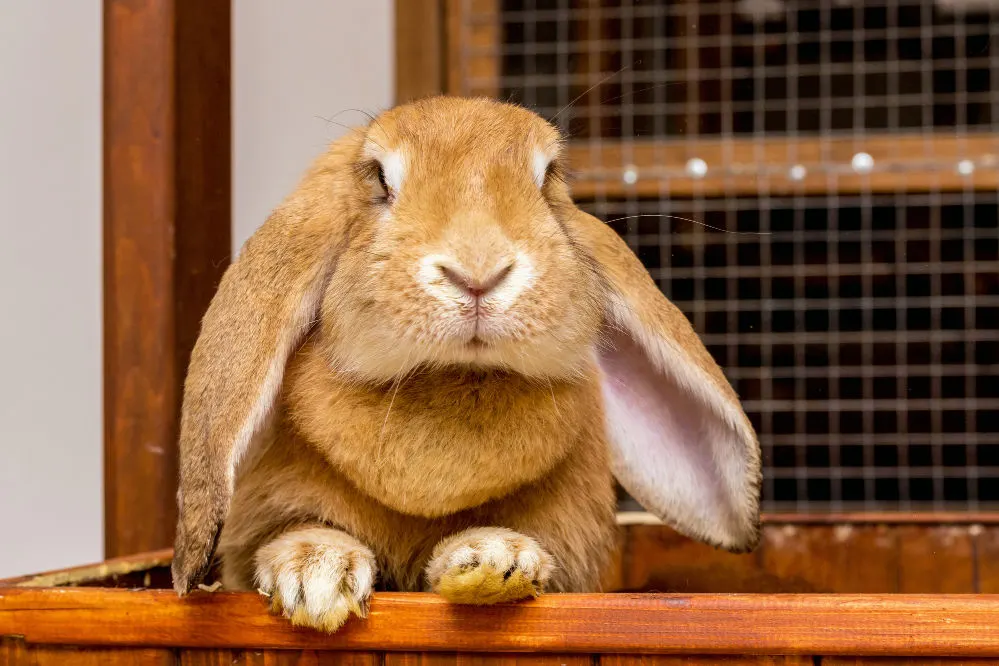
Remember to follow proper safety precautions when building and using your cage.
Tip: To avoid scratches and injuries, wear thick gloves and construction goggles.
Indoor two-story rabbit hutch with side and front door
Consider a two-story model with side and front doors for a spacious and versatile indoor rabbit hutch. Ramps and hideaways for added entertainment are fun for your bun while providing plenty of room for them to move around.
Look for models (or build one) with sturdy construction and easy-to-clean surfaces for the best results.
Tip: Untreated pine wood is a good idea for building a sturdy wooden frame for your furry friend’s new hutch. It’s non-toxic and durable.
Indoor breeding rabbit cage
If you’re planning on breeding rabbits, you’ll need a specialized indoor cage providing plenty of space for parents and little bunnies. Look for models (or construct one) with separate nesting areas and plenty of ventilation to keep everyone comfortable and healthy.
Indoor inexpensive bunny cage
If you’re looking for a budget-friendly option for indoor rabbit housing, plenty of inexpensive bunny cages are available. Look for models with simple designs, like plain wire panels, and easy-to-clean surfaces (i.e., vinyl or PVC) for the best results.
And don’t forget to add plenty of toys and hideaways to keep your bunny happy and engaged.
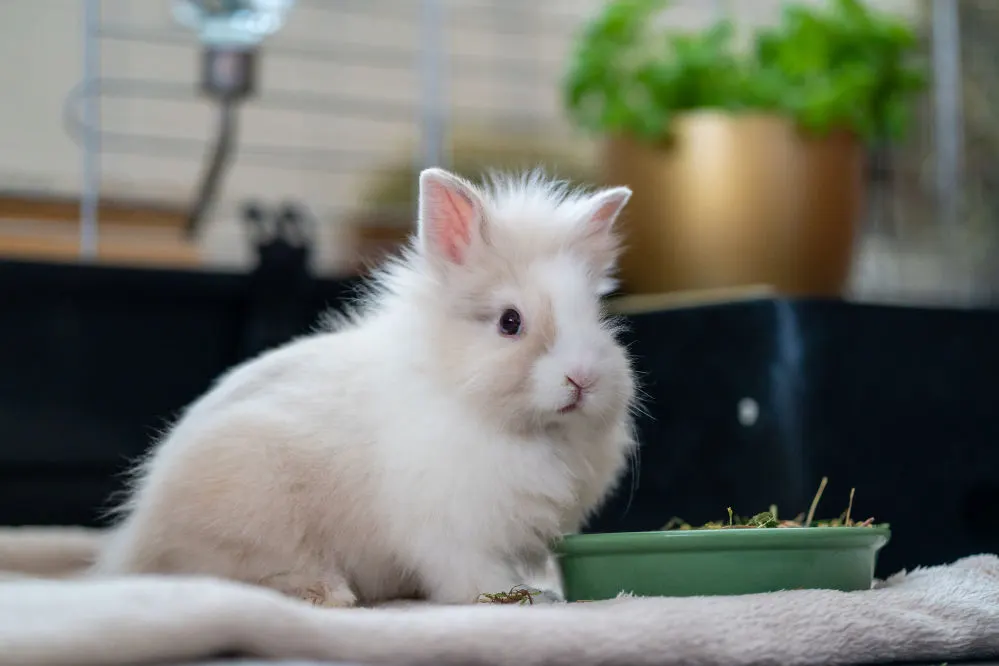
Tip: If you’re building this yourself, you can purchase plain wire panels and connectors from your local hardware store and use yoga mats for the flooring. They’re easy to clean, relatively affordable, and make for great exercise pens.
Outdoor rabbit house ideas
If you don’t have much space indoors or prefer to have your rabbits outdoors, here are some ideas for you. Hop on and find an outdoor rabbit house your hopper will find worthwhile.
Outdoor A-frame rabbit hutch
An outdoor A-frame rabbit hutch is a classic and stylish option for your style-conscious bunny’s outdoor housing needs (okay, maybe that’s you). With its sloping roof and sturdy construction, this hutch can provide both comfort and security for your pet.
As always, ensure your rabbit’s hutch has plenty of ventilation and easy-to-clean surfaces.
Outdoor slant roof rabbit hutch
How about a slant roof model for a more modern and sleek outdoor rabbit hutch design? These units often feature clean lines and a minimalist aesthetic while still providing plenty of room for your bunny to move around.
Look for models with sturdy construction (i.e., pinewood is great) and weather-resistant materials (i.e., tarp, asphalt shingles, or self-adhesive bituminous roofing).
Outdoor rabbit hotel
Consider an outdoor rabbit hotel if you have multiple rabbits or just want to spoil your pet with a luxurious outdoor living space. These multi-level units often feature ramps and hideaways for your rabbits’ added entertainment while providing plenty of room to move around.
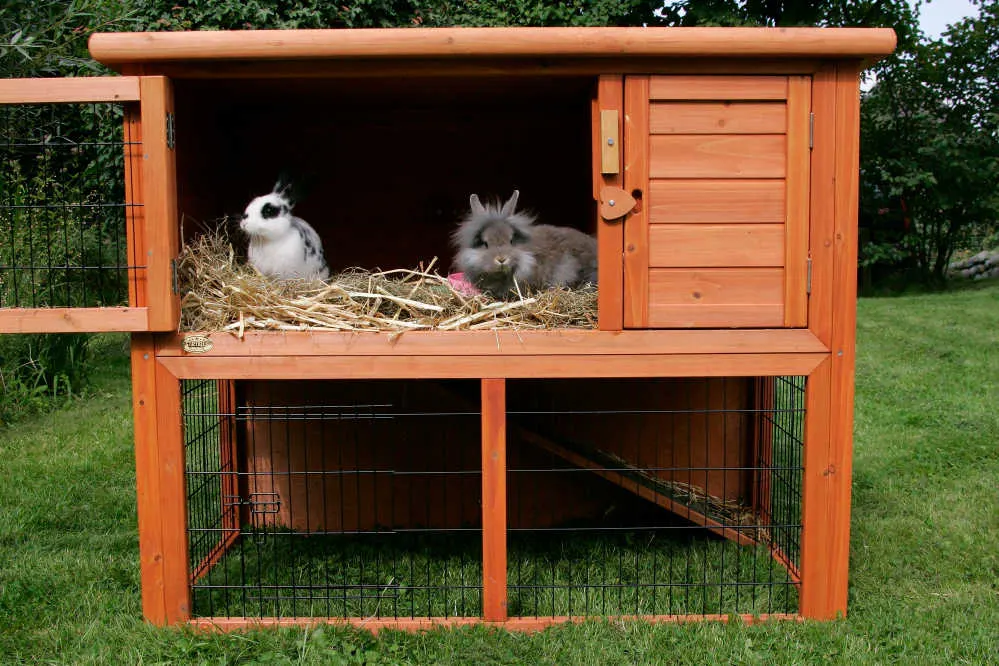
Basic outdoor DIY hutch
If you’re handy with tools and looking for a budget-friendly option for outdoor rabbit housing, why not build a basic DIY hutch? With some essential materials like wood and wire mesh, you can create a custom hutch that perfectly fits your bunny’s needs.
Remember to follow proper safety precautions when building a hutch for your rabbit, though.
Outdoor sectional rabbit hutch
For a flexible and customizable outdoor rabbit hutch design, consider a sectional model. These units often feature multiple sections that can be arranged in various configurations, allowing you to create a unique and personalized living space for your bunny.
Outdoor double-decker rabbit hutch
For a space-saving and multi-level outdoor rabbit hutch design, try a double-decker model. Like the outdoor rabbit hotel, this hutch often features ramps and hideaways.
Plus, this type of hutch can save you space by allowing you to keep more rabbits but still only take up a relatively small amount of floor space.
Outdoor rabbit hutch for cold weather
If you live in an area with really cold winters, you’ll need a specialized outdoor rabbit hutch that provides plenty of insulation and protection from the elements. Look for models with thick walls and roofs, as well as features like insulation and weather stripping to keep your bunny warm and comfortable.
Tip: For further protection from the elements, you may want to consider placing this in your garage or shed to keep your bunnies warm.
Outdoor wooden pallet rabbit hutch
For an eco-friendly and budget-kind option for outdoor rabbit housing, try using wooden pallets to build your hutch. With a bit of creativity and DIY know-how, you can turn a few pallets into a comfortable and functional living space for your bunny.
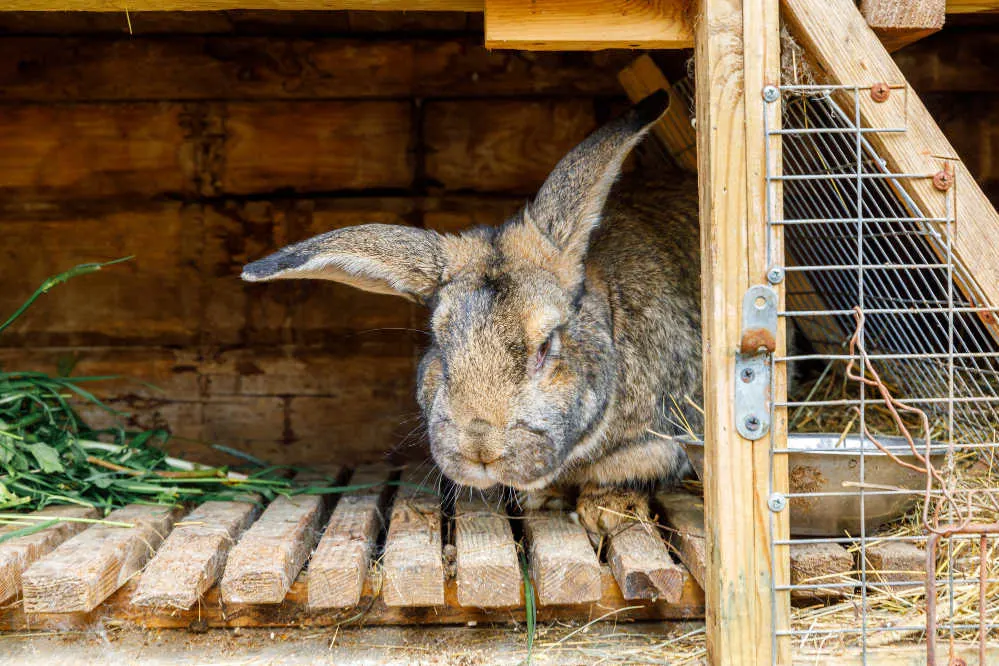
Tip: You can purchase wooden pallets from construction stores. But for a more budget-friendly option, consider asking furniture shops or liquor stores if they have spare wooden pallets they wouldn’t mind giving to you.
Outdoor multi-cage rabbit hutch
An outdoor multi-cage rabbit hutch is an excellent option for rabbit owners who want to keep multiple rabbits in a single outdoor space. These hutches feature multiple compartments or cages connected by wire mesh tunnels or doors, allowing your bunnies to interact while still having their own spaces to retreat to.
One of the key benefits of a multi-cage rabbit hutch is that it allows for socialization and play between rabbits, which is important for their mental and physical well-being. Plus, these hutches typically have more room for daily exercise and stimulation, which can help prevent boredom and destructive behavior.
Another advantage of a multi-cage hutch is that it allows for easier monitoring of each individual rabbit’s health and behavior. You can quickly identify any potential health issues or signs of stress or aggression between rabbits, making it easier to address these issues before they become more serious.
Outdoor single PVC hutch
This hutch, made of wood and PVC pipe, is perfect for outdoor use, as it allows your bunny to enjoy fresh air. It also provides them with a comfortable living space that keeps them safe from predators.
A major benefit to this hutch is that it’s a budget-friendly option. Thanks to affordable materials (like wood and wire) you can purchase at your nearest construction or pet store, you can save a lot of money.
This design requires you to build the frame, legs, and rabbit hole with wooden planks. After that, you’ll use a PVC pipe to complete the frame on top and add wire to create open spaces for your rabbit to move around and breathe fresh air. You’ll end up with a sturdy and spacious hutch your pet rabbit will love.
Outdoor wire rabbit cage
If you’re looking for a durable and secure outdoor housing option for your bunny, an outdoor wire rabbit cage may be a great idea. These cages are typically made of sturdy metal wire mesh that provides plenty of ventilation and allows your bunny to see their surroundings.
One of the key benefits of an outdoor wire rabbit cage is the added security it provides. Unlike a wooden hutch, a wire cage is much harder for predators to break into, keeping your bunny safe and secure. Additionally, wire cages are easy to clean and maintain, with many models featuring removable trays for easy waste removal.
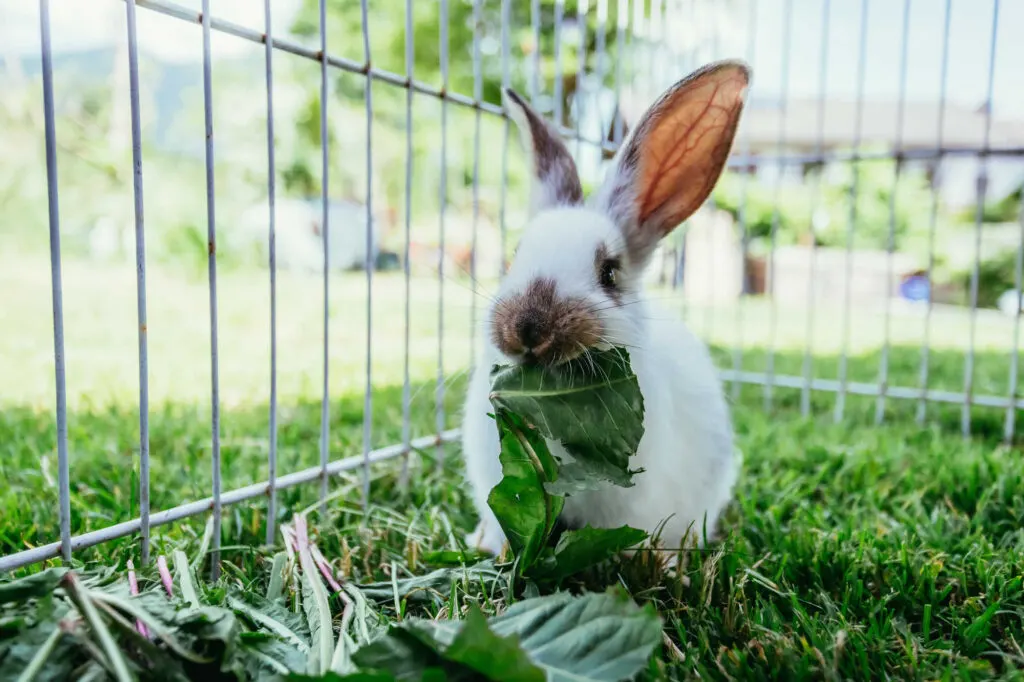
Wire cages also allow for plenty of exercise and stimulation for your bunny, with many models featuring multiple levels and compartments for hopping and hiding. Just be sure to provide plenty of shade and protection from the elements, especially in hot or cold weather.
How to choose the best rabbit house for your bun bun
As a rabbit owner, one of your top priorities is ensuring your furry friend has a comfortable and safe place to call home. With so many rabbit house options available, it can be overwhelming to choose the best one for your little friend. But don’t worry. Here are some factors to consider when selecting a rabbit house:
Size
Much like humans (and other pets), rabbits need plenty of space to move around, play, and exercise. As such, your rabbit’s house should have enough space for them to stretch out comfortably and have separate areas for sleeping, eating, and using the bathroom.
Plus, these little guys like hopping around, so this is an important consideration. A good rule of thumb is to choose a house that’s at least four times your rabbit’s size and consider adding on a rabbit enclosure or exercise pen, too.
Material
You not only want a rabbit house that looks good but one that’s also practical. This means getting (or building) one made of durable, non-toxic materials. These must be easy to clean and maintain.
While wooden houses are popular, rabbits can chew on them, which can be dangerous if the wood isn’t clean and untreated. Alternatively, you can opt for plastic, metal, or wire mesh cages. Just ensure they don’t come with wire floors, as this can cause injuries to your bun bun’s feet.
Tip: Curious to find out what other small pets can and can’t eat? Read this post on whether guinea pigs can eat apples.
Ventilation
Good ventilation is essential for your pet rabbit’s health. To ensure a safe environment for your rabbit, ensure that the rabbit house has proper airflow and is easy to clean in order to prevent ammonia buildup from your rabbit’s urine. While it’s all-natural, ammonia can be harsh on your rabbit, potentially causing respiratory and eye infections for your precious pet.
Thankfully, you can avoid this by getting (or building) a rabbit house with multiple vents or a mesh wire design and regularly cleaning their litter box.
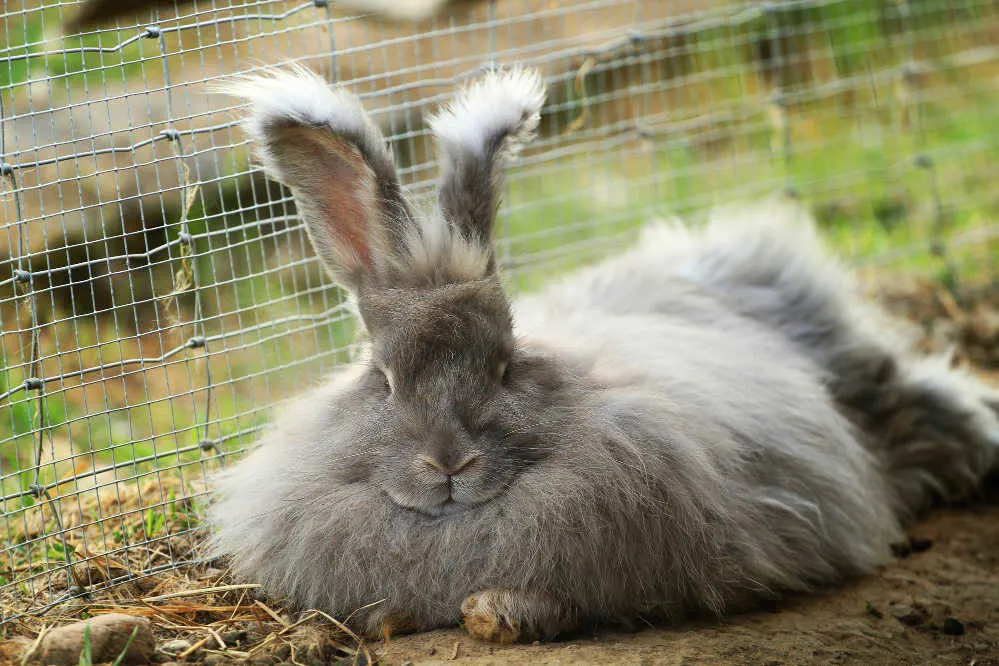
Accessibility
This will make life easier for you and your little furry friend. Ensure you can easily access parts of the rabbit house for cleaning and maintenance.
Depending on your chosen design, your rabbit house may have removable trays or doors that make it easier for you to clean their living area or replace the straw bedding.
Location
Place your rabbit’s house in a quiet area of your home, but not too far away from the rest of the household. Also, keep it away from direct sunlight and extreme temperatures. That said, it’s worth keeping in mind that these cute guys are social animals and prefer to be near their human companions.
So if your rabbit’s house is indoors, consider placing it in a room where you spend a lot of time or in a passage you walk through frequently. If your bun bun’s house is outdoors, ensure it’s in an area that gets quite a bit of foot traffic so your rabbits know you’re close by.
What to put in your rabbit’s house
After choosing the rabbit house you know your rabbit deserves, it’s time to arrange some furniture for your little furry friend.
Soft flooring
Rabbits need soft and comfortable flooring to prevent sore hocks and other foot-related issues they’re prone to having. Opt for materials like carpets, blankets, or foam mats that provide cushioning for your rabbit’s feet. Again, avoid wire-bottomed cages as they can cause sores on your rabbit’s feet.
Litter trays and fillings
Litter trays are essential for keeping your rabbit’s living space clean and hygienic. Use a tray that’s large enough for your rabbit to move around in and fill it with a safe and absorbent material like paper pellets or wood shavings.
Be sure to clean the litter tray regularly to prevent odors and the buildup of bacteria.
Food and water bowls
Choose heavy and non-spillable food and water bowls to prevent your rabbit from accidentally knocking them over. The bowls should be shallow to allow easy access for your rabbit, and please clean and refill them regularly to ensure your rabbit always has access to fresh food and water.
In addition to these essentials, you may want to include some toys and hiding spots to keep your rabbit entertained and happy. Rabbits love to chew, so provide them with chew toys like wooden blocks or cardboard tubes.
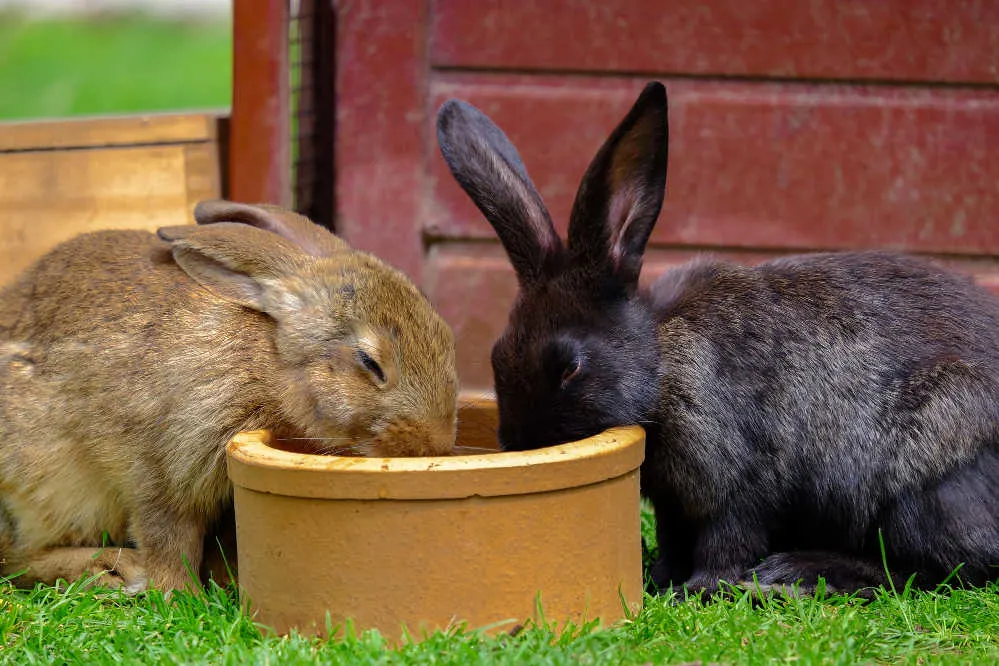
Hiding spots like tunnels or boxes provide your rabbit with a place to retreat when they want some privacy or feel stressed.
Final thoughts on rabbit house ideas for your hopper
There are endless possibilities when it comes to designing a rabbit house that is both functional and visually appealing for your furry friend. Whether you choose to build a custom wooden hutch or repurpose an old piece of furniture. It’s important to prioritize your pet’s needs for space, ventilation, and comfort with these rabbit housing ideas.
Don’t forget to consider practical features like easy access for cleaning and food and water dispensers. And, of course, have fun with the design process! Your hopper will surely appreciate a cozy and inviting home that they can call their own.
Now that you have a bunny house, perhaps you need a bunny (or two) to go in it. Take a look at these adorable rabbit breeds you never knew you needed.
Steph Dyson is a travel journalist by trade but a lover of all small pets. She’s been a pet mum to everything from gerbils to guinea pigs, rabbits to hamsters, and fish to dogs of all shapes and sizes. She wants to share her years of experience with small pets and make Small Pet Guides the go-to website for pet owners seeking information and care advice.

